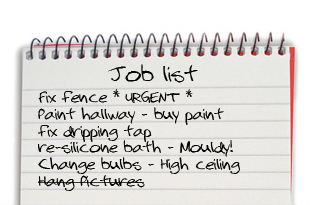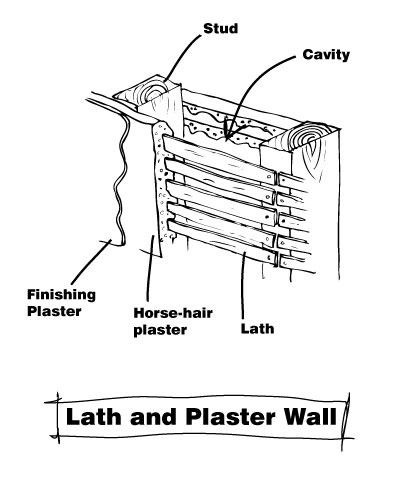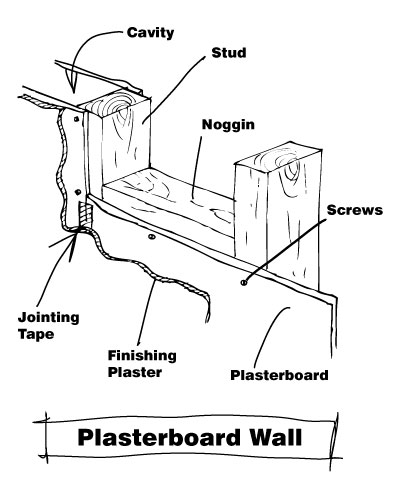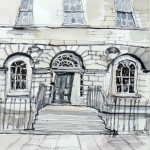When it comes to putting up a shelf, curtain track or a heavy mirror, knowing what the wall structure is will help determine how a safe and reliable fixing is achieved.
There are 4 common type of wall constructions in Edinburgh properties;
1: Lath and Plaster
2: Plasterboard Stud walls
3: Solid Masonry walls
4: Plasterboard Dot & Dab masonry walls
**UPDATE**
Each Wall requires the correct fixing.
1. Lath & Plaster
typically this type of wall is found in the older properties, like tenement flats, and has a solid yet hollow sound when tapped. Fixing into the wall can seem secure but may only be a tentative fixing to the lath, which may suit a lighteight application but ideally you need to be hitting a stud for maximum strength, but this doesn’t always allow you to put the mirror quite where you had in mind. Using any form of rawl plug can make matters worse as their is no strength in the fixing as the plaster being very old is often quite crumbly.
Further Reading Back to Top2. Plasterboard Stud Wall
This type of construction is very common in new buildings and where renovation work has been carried out. Stud walls are quick and cheap to put up.
Like the Lath and plaster the strength of the plasterboard is limited to lighter weight fixing applications and heavier items can be fitted but only when you can spread the load, you certainly could not hang a heavy mirror on a single fitting. To get the maximum strength you again would be best to try and utilise the Stud or noggin. Tapping this wall will allow you to narrow down where the stud is located as the wall generally sound hollow until you hit a stud when it should sound more solid. Metal studwork is also becoming more popular, this can make tapping for a stud more difficult as the metal stud is also hollow.
Further Reading Back to Top3. Solid Masonry Wall
Masonry walls are by far my favourite wall for fixing to because it offers a very strong fixing. Even with a nice strong masory wall you still have a couple of things to consider. How hard is the brick or breeze blocks, this will in turn determine if you need a more powerful drill and quality masonry drill bit – along with a god bit of muscle power behind the drill!
One other downside is that when the brick is covered with the plaster finish and hides the jointwork of the brick meaning you don’t know until you start drilling if you are going to hit the mortar gap between. This is not so problematic in newer buildings where the mortar is in sound condition but can be very soft and weak in older buildings. When tapping the wall to determine its structure you would hear a good solid thud, unless the plaster was loose in areas which would sound slightly hollow – Likely in old properties.
Further Reading Back to Top4. Dot & Dab Plasterboard Wall
This is a less common type of wall, but is very similar in principal to the solid Masonry wall except the plasterboard has a small gap between it and the Masonry. Fixing is generally pretty good with similar problems with the masonry wall, like hitting a mortar joint or the wall being very tough to drill. This wall can be deceiving when tapping as it can sound hollow like a stud wall however tapping the wall more widespread would allow you to hear a more regular solid thud every time you tapped a dab.
**UPDATE**
I recently came across a new wall structure for me. this wall is compiled of 2 sheets of wallboard (plasterboard) and they must have been factory made with a latticework of cardboard glued in-between. This is a very narrow wall structure, only about a couple of inches, but it is likely to have similar strengths and weaknesses as a standard stud wall except without many studs! so not a load bearing structure. I don’t believe this is a common and may be ‘paramount partition board’ or ‘eggbox partition’ used in the 60s and 70s in affordable housing. No
Further Reading Back to Top
Call now for a no obligation estimate 07810 825089
Or alternatively send a text or email – Handy David Edinburgh Handyman Services








